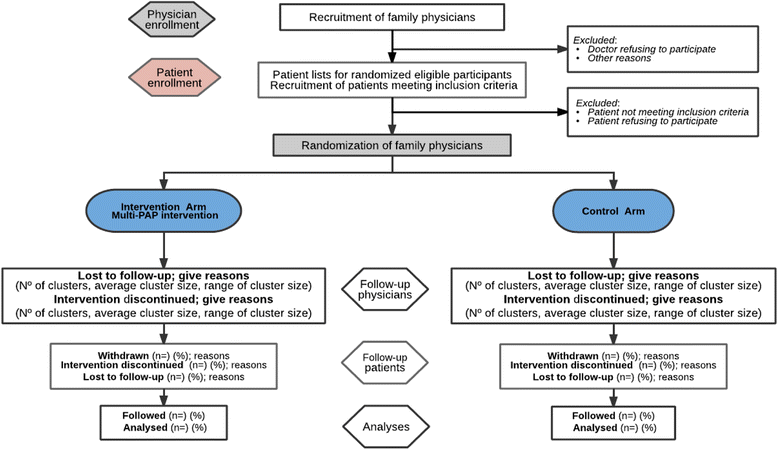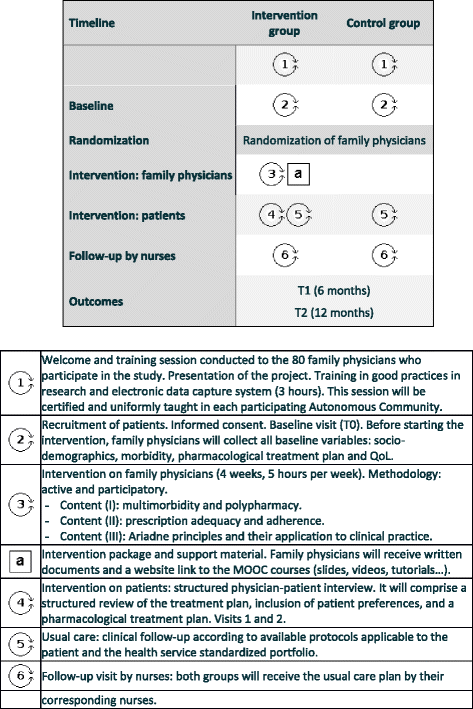Effectiveness of an intervention for improving drug prescription in primary care patients with multimorbidity and polypharmacy: study protocol of a cluster randomized clinical trial (Multi-PAP project)
- PMID: 28449721
- PMCID: PMC5406997
- DOI: 10.1186/s13012-017-0584-x
Effectiveness of an intervention for improving drug prescription in primary care patients with multimorbidity and polypharmacy: study protocol of a cluster randomized clinical trial (Multi-PAP project)
Abstract
Background: Multimorbidity is associated with negative effects both on people's health and on healthcare systems. A key problem linked to multimorbidity is polypharmacy, which in turn is associated with increased risk of partly preventable adverse effects, including mortality. The Ariadne principles describe a model of care based on a thorough assessment of diseases, treatments (and potential interactions), clinical status, context and preferences of patients with multimorbidity, with the aim of prioritizing and sharing realistic treatment goals that guide an individualized management. The aim of this study is to evaluate the effectiveness of a complex intervention that implements the Ariadne principles in a population of young-old patients with multimorbidity and polypharmacy. The intervention seeks to improve the appropriateness of prescribing in primary care (PC), as measured by the medication appropriateness index (MAI) score at 6 and 12 months, as compared with usual care.
Methods/design: Design: pragmatic cluster randomized clinical trial. Unit of randomization: family physician (FP). Unit of analysis: patient.
Scope: PC health centres in three autonomous communities: Aragon, Madrid, and Andalusia (Spain).
Population: patients aged 65-74 years with multimorbidity (≥3 chronic diseases) and polypharmacy (≥5 drugs prescribed in ≥3 months).
Sample size: n = 400 (200 per study arm).
Intervention: complex intervention based on the implementation of the Ariadne principles with two components: (1) FP training and (2) FP-patient interview.
Outcomes: MAI score, health services use, quality of life (Euroqol 5D-5L), pharmacotherapy and adherence to treatment (Morisky-Green, Haynes-Sackett), and clinical and socio-demographic variables.
Statistical analysis: primary outcome is the difference in MAI score between T0 and T1 and corresponding 95% confidence interval. Adjustment for confounding factors will be performed by multilevel analysis. All analyses will be carried out in accordance with the intention-to-treat principle.
Discussion: It is essential to provide evidence concerning interventions on PC patients with polypharmacy and multimorbidity, conducted in the context of routine clinical practice, and involving young-old patients with significant potential for preventing negative health outcomes.
Trial registration: Clinicaltrials.gov, NCT02866799.
Figures
References
Publication types
MeSH terms
Associated data
LinkOut - more resources
Full Text Sources
Other Literature Sources
Medical
Research Materials



